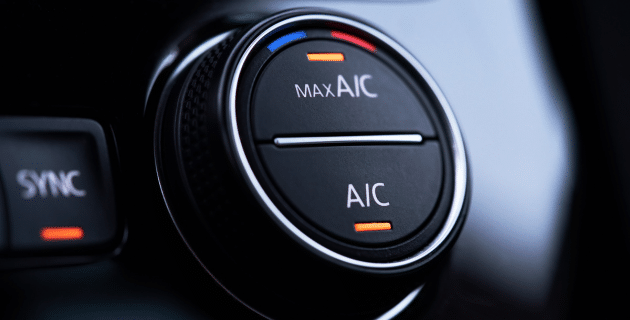
by California Casualty | Safety, Travel |
It’s going to be a hot one. When you’re traveling, that can be a problem. Vacationing in extreme heat is not only uncomfortable, but it can put you in real danger. Here’s how to keep your cool when you’re traveling or vacationing in extreme heat this summer.
Avoid the hottest hours.
The sun is highest at midday but that’s not when the air is the hottest. While it depends on your geographic location, generally the hottest times of day are between 3 and 6 pm. It’s a good idea to avoid being outside during those hours. Take a siesta in your vacation home. Plan an itinerary that includes outdoor adventures earlier in the day or in the evening. The advantage of traveling in the summer is that sunset is very late in some countries so there’s extended daylight well into the evening hours.
Pro Tip: Check for evening discounts. Some attractions may offer them.
Wear the right clothes.
Look for white or light-colored clothing made of rayon, cotton, or linen. Those fabrics will allow heat to pass through and keep you cooler. Avoid synthetics and dark colors which absorb heat. Choose loose styles that allow your body the space to “breathe” and sweat. Don’t forget your hat and sunglasses; both will help.
Stay hydrated.
You sweat more when it’s hot, and so you need to replenish the water and nutrients lost by your body. Try to drink every 15-30 minutes even if you’re not thirsty. Stick to water or sports drinks that have electrolytes. Avoid caffeinated drinks and alcohol, both of which are dehydrating.
Pro Tip: Set reminders on your phone to hydrate. There are apps available that can make it fun.
Choose the right foods.
When we eat a lot of heavy foods, our bodies work hard to digest them. In the process, that creates heat. Choose lighter fare instead. Hydrating foods like fruits and salads do double duty and provide extra water. Cold foods, like ice cream and smoothies, naturally help to cool down your body. Salty snacks such as salted nuts, popcorn, and trail mixes help replace electrolytes.
Get wet.
If you can’t get to a swimming pool to cool down, there are some creative options. Take a cold shower or dunk your head under the faucet. Wet hair will make breezes feel cool. Hold your wrists under cool running water. Wet your hat or wear a damp evaporation scarf. All of this will help lower your body’s core temperature.
Pro Tip: Invest in a breeze fan and bring the misty breeze along with you.
Use an umbrella.
Think of it as your personal shady spot. By keeping the sun’s rays off you, an umbrella will make you cooler. Heading to the beach? Bring a tent or umbrella for a similar effect. In general, it’s a good idea to seek out shade wherever you go.
Look for places to cool off.
Look for malls, libraries, museums, and galleries that can offer quick relief. Plan for those inside activities during the hottest part of the day. You may want to call ahead to confirm that they have air conditioning. It is not necessarily the norm in countries outside the U.S.
Don’t overdo it.
Exercise raises your core body temperature. Limit physical activities in the heat. Avoid climbing hills or doing any activities that require exertion. These activities will only put extra stress on your body as it’s trying to deal with the heat.
Take care of your car.
Extreme heat can affect your car, too. If you’re on a road trip, make sure to be aware of the effects. The heat could make it hard for your battery to hold a charge. It can affect tire pressure and even cause tires to overheat, putting you at risk for a blowout. Air conditioning puts extra stress on the engine. Before you plan a road trip in the summer, have your vehicle checked to make sure it’s in its best shape to travel.
Acclimate yourself before your trip.
You can adjust your body to the heat before your vacation. Go to a sauna or steam room. Work up to spending 30-40 minutes in that sauna/steam room over 7-10 days. It allows your body to get used to the heat.
Beware of heat stroke.
Know the signs of heat stroke and a place where you can get medical attention while traveling. Children and the elderly are especially vulnerable so you will want to take extra precautions to keep them cool.
Safe travels and enjoy the journey!
This article is furnished by California Casualty, providing auto and home insurance to educators, law enforcement officers, firefighters, and nurses. Get a quote at 1.866.704.8614 or www.calcas.com.

by California Casualty | Finances, Safety |
Your cell phone is your trusted companion, your admin assistant, social director, banker, compass, and connection to the world. If it ends up in the wrong hands, you could be in deep trouble.
At best, a hacked phone could make life difficult. At worst, it could result in thousands of dollars in identity theft. Here’s what you need to know to protect your cell phone from hackers.
Update to the latest version.
Many hackers take advantage of out-of-date operating systems. Whether you have iOS or Android, make sure to update your phone to the newest version. This will give you the latest security fixes.
Avoid fingerprint and facial recognition.
Hackers can take your fingerprints from a drinking glass to open your phone. They also can use photos of you to get past facial recognition settings. Use a pin instead and make sure you’re the only one that knows it. Change it regularly, at least once a year.
Pro Tip: Don’t set your phone to automatically unlock, even at home. If you’re an iOS user, disable Siri access from the lock screen.
Avoid unsecured connections.
Public WiFi is available nearly everywhere. While it makes our lives easier, it comes with security risks. Use caution if you’re on an unsecured network. Never access your bank account or shop online unless you’re on a secure network with a lock icon.
Pro Tip: Use a VPN, a virtual private network that protects your identity while working on a public network. VPNs usually have an associated fee.
Use strong passwords for your apps.
Avoid pet names, birthdays, and other personal information that may readily be available on social media. It makes it easy for hackers to guess your password. The best passwords are complex and unique. Password managers make it easy to set distinct passwords without having to memorize them.
Pro Tip: For an added layer of security, use different email addresses: one for financials and one for social media.
Don’t just download any apps.
Anyone can create an app, including hackers. If you download the wrong app, you could be adding malware that can steal from your phone. Make sure the apps you’re using are from reputable companies. Take a few minutes to review your apps and delete any that aren’t verified.
Don’t save your information.
It may be convenient to save your credit card information on online shopping sites. Check out as a guest instead. Be selective when you give out your personal information.
Freeze your credit.
Cell phone providers use the National Consumer Telecom & Utilities Exchange. Freeze your credit with them and with the big 3 credit unions: TransUnion, Equifax, and Experian. This will ensure that no one can open new accounts in your name.
Disable WiFi, Bluetooth and Cellular Data if not using your phone.
A hacker can’t hack you if you’re not connected. When in a public place, you can disable access to the internet. One easy way is to turn on Airplane Mode. You also can use your user’s manual to find out how to disable connectivity.
Consider anti-virus software.
There are two schools of thought on whether security software is necessary for smartphones. Some say it’s unnecessary and others recommend it. You may consider it as an additional layer of protection.
Know how to control your phone remotely.
Settings and apps allow you to remotely lock and erase your phone if it’s stolen. Make sure you know how to use them. There is the “Find My Phone” option in iCloud and the Android Device Manager in Google.
Back up your data.
Make sure you regularly back up your data to the cloud or your computer. If you’re hacked, you’ll still have access to that information.
How to Know if Your Phone Has Been Hacked
You may not realize the moment your phone is hacked. Initially, it may present as a technical issue. Malware can cause this with its malicious code. Watch for these telltale signs:
- Your phone loses charge quickly.
- Your phone runs very slowly, freezes and crashes.
- You notice unusual activity on your online accounts.
- There are popups or changes to your home screen.
- You receive unfamiliar calls or texts.
If you believe your phone was hacked, install and run anti-virus protection. Delete any risky apps, texts, and files. If the damage is extensive, you can always wipe and restore your phone to factory settings. Then you’ll be able to address the damage done by hackers to your accounts, both financial and social.
This article is furnished by California Casualty, providing auto and home insurance to educators, law enforcement officers, firefighters, and nurses. Get a quote at 1.866.704.8614 or www.calcas.com.

by California Casualty | Auto Insurance Info, Finances, Homeowners Insurance Info |
You had a checklist for the perfect wedding. Now that the big day is over, you’re ready for the next step: the “to do” list after the “I do’s.”
We’ve put together the definitive checklist so that you won’t miss a thing as you transition into married life. It’ll be a piece of cake – pun intended – after planning a wedding. Remember, you’ve got this.
- Take care of the post-wedding details.
The wedding may be over, but there are likely some details that still need to be addressed. You’ll want to take care of them in a timely fashion, but most can wait until after the honeymoon.
- Returned rented clothing and items. Take your wedding dress to be cleaned, boxed, and preserved.
- Pay outstanding vendor bills. Many wedding vendors require payment on the day of your event, but for those who will bill you, make sure to pay them promptly.
- Order photos. Set aside several hours to review your photos and choose the top 20-30. Then create a flow that tells the story of the day from start to finish.
- Send thank you notes within 3 months of the wedding. Consider alternatives to handwritten notes, such as postcards with a photo of the wedding and a heartfelt sentiment.
- Request your marriage certificate.
This is not to be confused with your marriage license, which is the legal document that allows you to get married. A marriage certificate is legal proof that you are married. It often has a raised seal.
- After the ceremony, it is the responsibility of your officiant to bring the marriage license to the county clerk so that a marriage certificate may be generated.
- Contact the county clerk’s office and order 3-5 certified copies. Note that there will be a charge for each one that you request.
- Arrange to have the copies mailed, or for you to pick them up.
- Legally change your name (optional).
If you plan to change your name, there is a process to follow.
- You will need your marriage certificate to apply for a new social security card. That’s the first step in changing your name.
- Once you have a social security card, you can take that, your marriage certificate, and proof of address and visit the Department of Motor Vehicles for an updated driver’s license. You are now ready to use your new ID to update your name on your financial accounts. (See below.)
- You also may want to update your name on your social media accounts.
Pro Tip: If you don’t want to take the time to do it yourself, there are companies that provide name change services for a fee.
- Alert your employer.
If you changed your name and/or your address, you want to alert your employer so that they have the correct information on file.
- Provide a copy of your new driver’s license to your employer, which will include your new name and/or address.
- Make sure your employer has updated bank deposit information for payroll, health insurance, and your 401K.
- Request new business cards and/or an updated email address.
- Update your financial accounts.
Your financial accounts need to be updated if you changed your name and/or address. In addition, this is a good opportunity to take stock of your finances, create a budget, and how you will move forward as a married couple.
- Provide a copy of your marriage certificate, updated driver’s license, and proof of address to update the information at your bank.
- Do the same for any loans, such as car loans and mortgage providers, and for your credit cards.
- Set up a joint bank account if desired. Order checks with your married name and address.
- Update or change your insurance.
Now that you’re married, you will want to update your homeowner’s or renter’s policy and auto insurance so you’re together on the same policy.
- Contact your insurance provider to update them on your new name, address, and marital status. You will need to do this even if you do not change your name.
- Determine what changes need to be made on your homeowner’s or renter’s and car insurance policies. If you had individual policies previously, you would want to cancel them and have a new policy written for both of you.
- You may qualify for discounts through bundling Don’t forget to ask about those.
- Alert your service providers.
You’ll also want to update your service providers with your new name and address.
- Contact the utility providers for your home, including gas, electric, water, and Internet.
- Make a list of your doctors and other medical providers and alert them with new information, including updated health insurance if applicable.
- Update your memberships and subscriptions with any new information.
- Notify the government.
You’ll want to make sure that your married name is listed with your local town and various government agencies.
- If you own your home, check with the town/county clerk, and make sure your married name is listed on the property deed. This should also put your correct name on property taxes and sewer bills.
- Update your name (and if needed, address) with the post office and with your state’s voter registration.
- File for a new government-issued passport in your married name so that you’ll be ready for your next adventure.
- Merge your stuff.
You brought stuff to the marriage and so did your partner. Likely, you have duplicates. Now is a good time to decide what to keep and what to give away or sell. There are many Free Cycle and Buy Nothing Groups to donate right in your local community.
- Sell or donate your wedding dress, wedding décor, and any other wedding-related supplies that you no longer need.
- Go through your household items to look for duplicates. Decide to regift or sell.
- Return any unwanted wedding gifts within 2 months. You may use the credit with the store to buy the items you still need.
- Make a newlywed bucket list.
The wedding may be over, but your adventures are just beginning. To help with the post-wedding blues, create your newlywed bucket list and start planning.
- Make a list of the things you’d like to do together. Then choose a few you’d like to try sooner rather than later.
- Remember that it doesn’t have to be costly. You just spent a lot on a wedding and honeymoon. Maybe it’s hosting your first dinner party as a married couple or trying out a new hobby together.
- Plan a one-year anniversary vacation. Follow these pro tips to save money when you travel. You’ll have a year to save for the trip, and it will be another wonderful celebration of your new life together.
This article is furnished by California Casualty, providing auto and home insurance to educators, law enforcement officers, firefighters, and nurses. Get a quote at 1.866.704.8614 or www.calcas.com.




